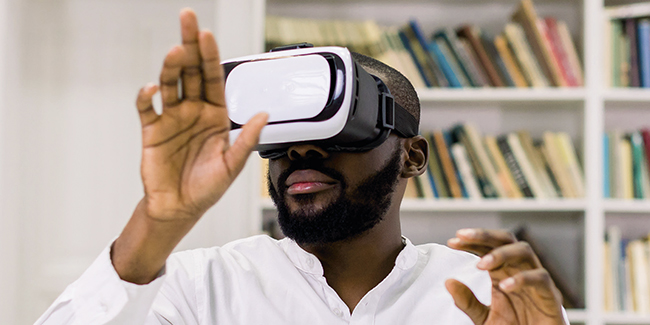
THROUGHOUT history, libraries have been grounded in physical artefacts and a sense of place – in print books and library buildings (writes Thomas Shaw, Associate Director: Digital Innovation and Open Research at Lancaster University).
The advent of digital collections, and the notion of a ‘digital library’, prompted something of an existential crisis, presaging the potential demise of libraries as physical places.
If information is online, the argument went, what need is there for books and buildings? Well, quite a lot actually. Yes, there has been a digital revolution, and most libraries’ collections and activities are either fully digital or have
significant digital components. But library buildings are perhaps more important than ever, with many diverse uses. Something similar has happened in the music industry, with downloading and streaming, but also a resurgence in popularity
of vinyl records.
Yet we often think in terms of a digital-physical dichotomy, where these constitute separate pillars. I would argue this no longer reflects our reality. Digital-physical is a complex intersection, not two separate worlds. We can see this
in the way technology enhances user experience of physical space, and the way digitisation has created new ways to explore physical artefacts.
We have embraced this at Lancaster University through our library vision, The Library Towards 2025, asserting that “we will position the library where there is no separation between digital and physical”. Arguably, we are still on a journey
in understanding what that really looks like. But we’ve challenged ourselves to think holistically about how digital and physical interrelate. Ultimately, libraries are becoming post-digital, where digital is everywhere and underpins
everything, rather than being separate and discrete.
At Lancaster we’ve brought digital and physical together through our work on Lancaster Digital Collections, our image collections platform developed with the universities of Cambridge
and Manchester. It provides a rich digital experience to explore physical artefacts, including the ability to zoom into images in spectacular detail, unlocking new knowledge from physical collections. And we’re taking this ability
to unlock knowledge further by developing Lancaster Digital Collections for text mining.
The synthesis of digital and physical is reflected through our exhibitions. These have combined physical artefacts with digital exhibits, an interplay of digital and physical, creating an experience greater than the sum of its parts. And
like many other libraries, our digital studio and makerspace blends digital and physical, with 3D printers turning the virtual into tangible reality, and digital tools such as Raspberry Pis powering digitally-enabled physical objects.
In many libraries, digital is already enhancing user experience through tools like mapping software to find print books. Wireless sensors can assist libraries in understanding how space is used and driving improved design. Virtual reading
rooms, where special collections artefacts can be shared via visualisers and video calls, make physical collections more accessible. Looking to the future, mobile devices create possibilities for location-sensitive services, such as
push notifications for users when they enter the building. Or if users are seeking a comfortable reading or study space, monitoring technology could help them find areas where ambient temperature and noise level meet their preferences.
This isn’t separate worlds, this is digital complementing and enhancing physical.
Augmented reality provides even greater potential for combining physical and digital in the future. Think about users browsing shelves of print books who are unaware of the relevant ebooks the library has. And imagine if they could point
their phone at the shelf and see on the screen not just the print books, but interspersed among them the ebooks with that classmark too. Then imagine them being able to click through to read that ebook, almost as easily as if they
had picked it off the shelf.
Yet, in some respects this isn’t new. Libraries have blended physical and digital for years. Libraries were pioneers of digital automation, and as far back as the 1960s were starting to use computers to manage print collections. One of
the most powerful ways libraries have blended digital and physical is through providing computers and internet access. The physical space found a renewed sense of purpose as a gateway to the digital world, particularly through public
libraries and their essential role in bridging the digital divide.



